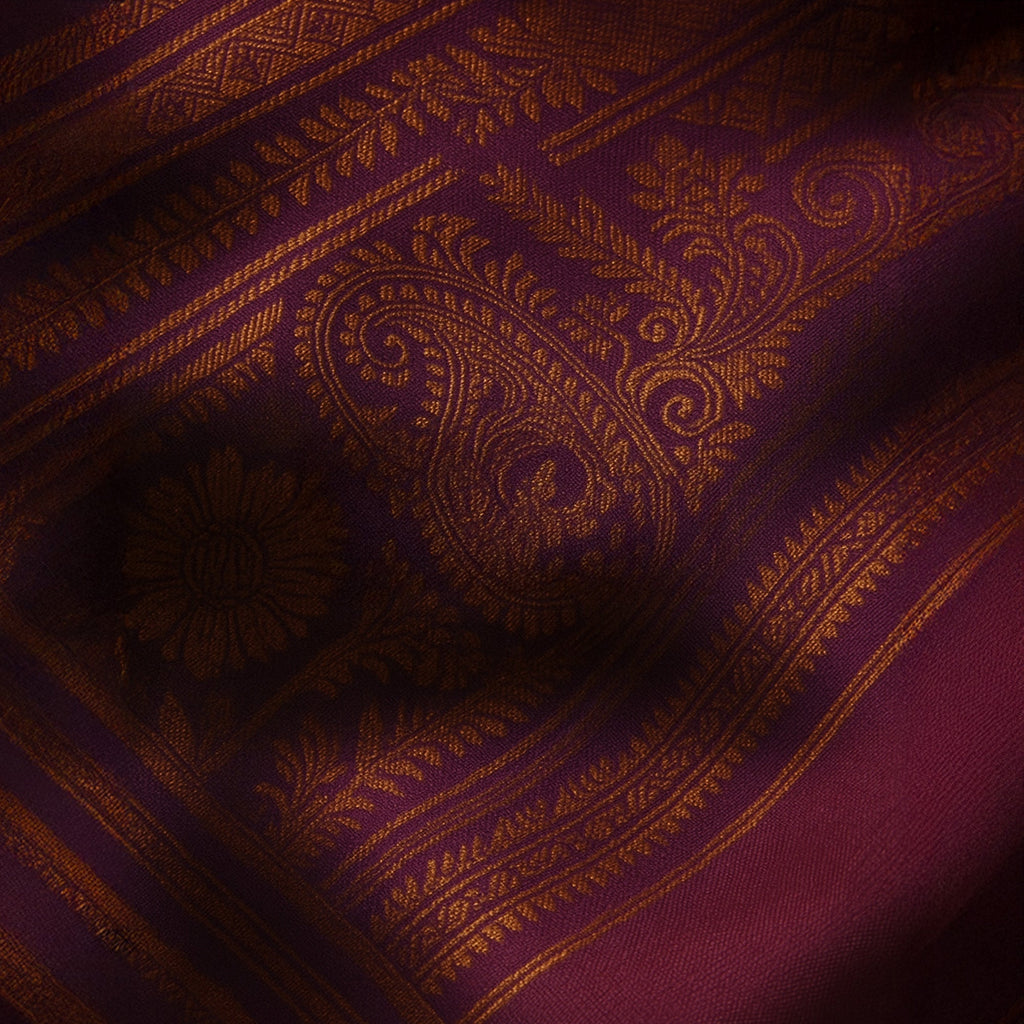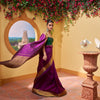Silk with Soul: How Artisans Bring Life to Every Kanchipuram Saree

In every fold of a Kanchipuram saree lies something deeper than silk—it carries a soul. This is not mere clothing, but living heritage handwoven by artisans who pour generations of skill, pride, and culture into every drape. A premium Kanchipuram saree is art you can wear, and behind each one is a story that deserves to be told.
The Legacy of Kanchipuram Weaving
Kanchipuram, a temple town in Tamil Nadu, has been a sacred center of silk weaving for over 400 years. Its legacy is inseparable from the cultural rituals and temple traditions of South India. Sarees woven in this district are protected by a Geographical Indication (GI) tag, meaning only those made here can be called true Kanchipuram silk sarees.
Each piece reflects a blend of tradition, devotion, and intricate craftsmanship—passed down not through books but through careful observation and generational apprenticeship.

Meet the Weavers: Custodians of a Golden Craft
The heart of this artistry lies in the hands of the weavers. These are families—often working from home or in cooperative looms—who have dedicated their lives to the loom. A single saree takes between 10 to 15 days, with 8-hour workdays, to complete. It’s slow fashion at its finest: thoughtful, precise, and personal.
In many homes, the women prepare the silk and zari threads while the men operate the loom. Young children grow up watching this rhythm—how the fabric grows inch by inch, hour by hour—until one day they, too, take their place behind the loom.
From Thread to Saree: The Art Behind the Weave
It all begins with raw silk sourced from Bangalore—known for its fine-quality mulberry silk. This silk is dyed into brilliant hues using traditional methods. Once ready, it’s stretched and aligned into the warp—the lengthwise threads that remain stationary on the loom.
The weft, or cross threads, are then woven in a rhythmic dance, going over and under the warp. This foundational process is how the saree begins to take form, line by line, motif by motif.
What sets Kanchipuram weaving apart is the korvai technique, which joins contrasting borders and body seamlessly. Patterns are chosen from design cards, which weavers follow like musical notes—chronologically arranged to create iconic motifs like mayilkan (peacock), gopuram (temple tower), or rudraksha beads.
Zari: The Golden Signature of Kanchipuram
No Kanchipuram saree is complete without its zari—the glimmering gold that lends it royal elegance. This zari comes from Surat, Gujarat, and is not just gold-coated thread. It’s a three-layered marvel: a silk core, wrapped in silver, and finally electroplated with gold. This method creates a finish that resists tarnishing and ages beautifully.
In most sarees, zari accounts for nearly 1.3 to 1.4 kg of the total 1.5 kg—an indication of just how rich and valuable this craft is. The inclusion of pure zari also enhances the resale value, making these luxurious sarees cherished heirlooms passed across generations.

Intergenerational Wisdom & Sacred Techniques
Unlike industrial textiles, Kanchipuram weaving is taught by touch and memory, not manuals. A grandfather may whisper design logic while a mother demonstrates how to wind zari just right. The weaving process often starts with a prayer, a humble offering to the divine forces believed to bless the loom.
Some families specialize in specific designs, while others are known for color combinations or flawless borders. Each artisan brings a part of their identity into the weave, giving every saree a soul of its own.
A Day in the Life of a Kanchipuram Artisan
A typical day begins at dawn. The loom is prepared, threads are realigned, and the design card is reviewed. Then begins the slow, steady rhythm of weaving—over and under, over and under—until muscle memory takes over.
Midday is spent inspecting the alignment, handling minor repairs, or preparing additional threads. By evening, the artisan looks at the emerging fabric with pride. It's not just silk—it’s a living piece of their story, destined to drape someone with elegance and emotion.
The Emotional Value of a Handwoven Saree

For many, a premium Kanchipuram saree is worn on milestones—weddings, births, festivals, or farewells. For a bride, it’s the first step into a new life. For a mother, it’s a memory wrapped in silk. For collectors, it’s an investment in cultural wealth.
But to the weaver, it is something else entirely. Each saree is a full-bodied expression of craftsmanship, patience, and inherited wisdom. What you wear is not just fabric, but hours of labor, years of training, and centuries of tradition.
Why Supporting Artisans Matters
Every time you choose a handwoven Kanchipuram saree, you’re preserving more than just a textile—you’re safeguarding a lineage, a livelihood, and a language of art that cannot be spoken, only felt. These sarees are not made in factories. They are made in hearts and homes, across looms passed down for generations. So when you wear one, wear it proudly. You’re wearing silk with a soul. We honour this heritage with every weave at Yaalika, where tradition meets craftsmanship. So when you wear one, wear it proudly—you’re wearing silk with a soul.
-
Posted in
kanchipuram silk, premium silk sarees




